- Home
- stock market
- TULIPMANIA: The True Story Of How A Country Went Totally Nuts For Flower Bulbs
TULIPMANIA: The True Story Of How A Country Went Totally Nuts For Flower Bulbs
According to lore, Tulipmania had its roots in the Ottoman Empire when Suleiman the Magnificent noticed a flower.

Collecting stuff in general — from art to sea shells — was already big when Tulips began popping up in Europe.
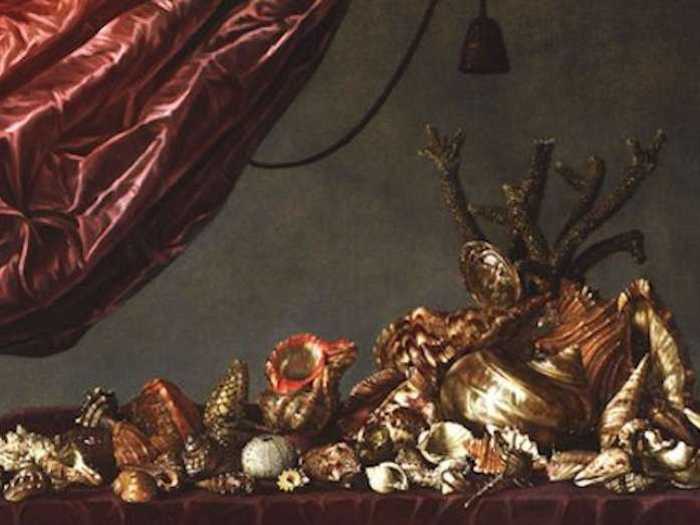
Clusius told his sea merchant friends to pick up odd fish for him on their travels, and would exchange rare plants for "medals or unusual man-made objects."
Source: Anne Goldgar, "Tulipmania"
And there was also already robust trading platforms in Amsterdam.
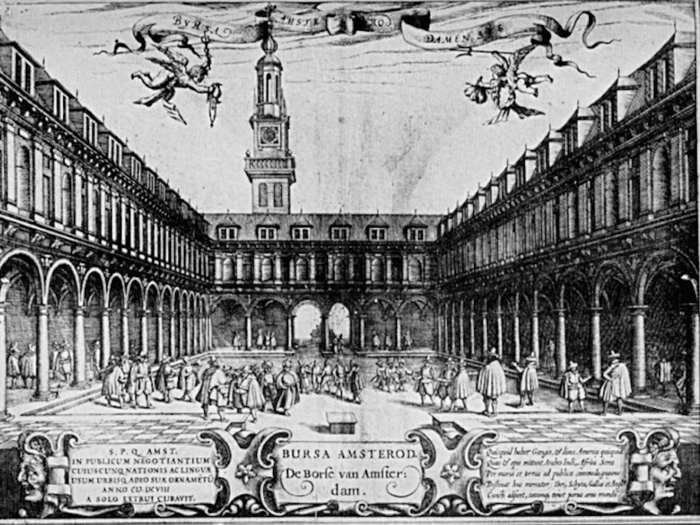
The Amsterdam stock exchange opened in 1602. The Baltic grain trade, which had helped lead to the creation of the Dutch East India Company, had been operating as an informal futures exchange for decades.
Source: Anne Goldgar, "Tulipmania"
By the turn of the 17th century, flowers had become the thing.

This created rivalries within what had been a "gentlemanly pursuit." "Friends are not friends in this profession, on the contrary, no one is looking these days for anything other than profit," one writer commented at the time.
Source: Anne Goldgar, "Tulipmania"
And among flowers, tulips proved to be most in demand.
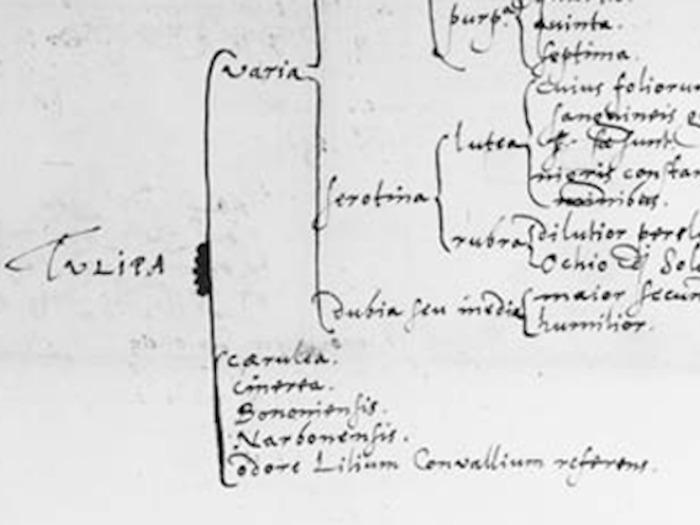
Not only were they beautiful, but there were lots of varieties to be pored over and classified. This went beyond aesthetics.
Source: Anne Goldgar, "Tulipmania"
By the 1630s, a number of tulip brokerages had opened.
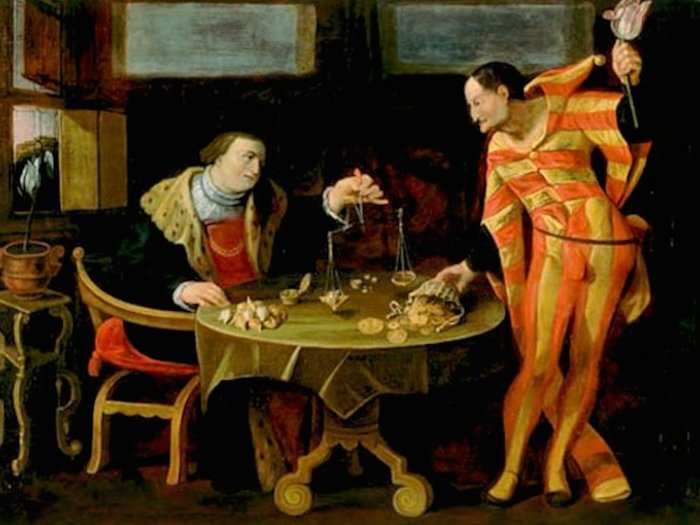
The trade proved irresistible. "He who considers the profits that some make every year from their tulips will believe that there is no better Alchemy than this agriculture," a contemporary poet wrote.
Source: Anne Goldgar, "Tulipmania"
Despite the exchanges, Goldgar argues that those involved in buying and selling specifically tulips were small in number.
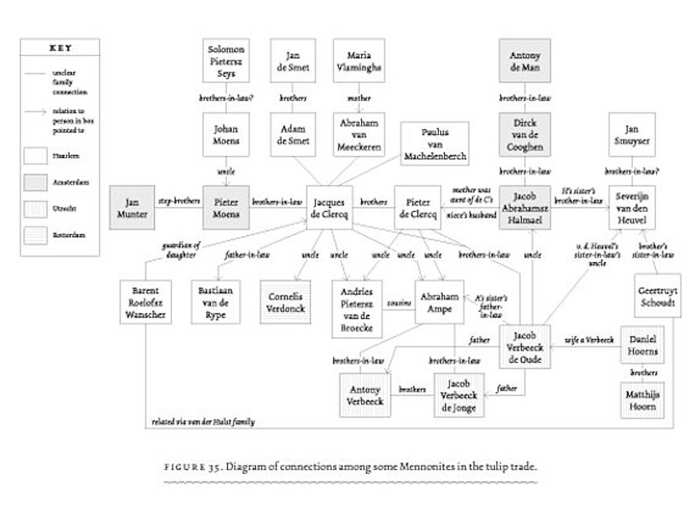
It mostly comprised wealth merchants and skilled craftsmen. They were often distant relatives of one another.
Source: Anne Goldgar, "Tulipmania"
Even though the actual trade was limited, Tulipmania soon became the talk of the nation.
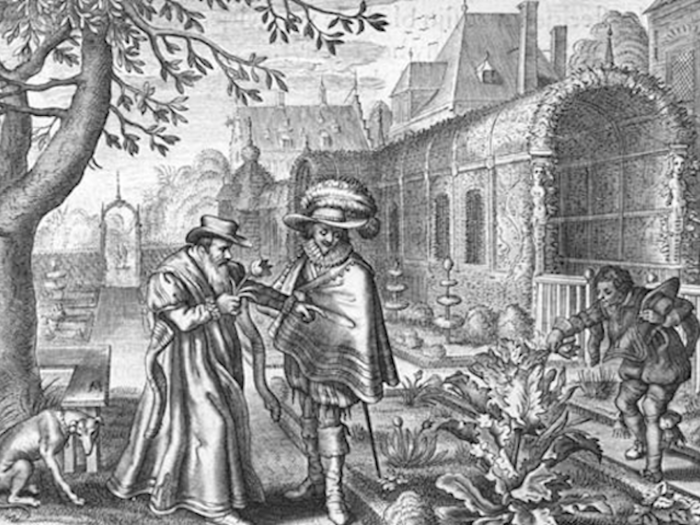
"Neighbors seemed to talk to neighbors; colleagues with colleagues; shopkeepers, booksellers, bakers, and doctors with their clients gives one the sense of a community gripped, for a time, by this new fascination and enthralled by a sudden vision of its profitability."
Source: Anne Goldgar, "Tulipmania"
In 1637, prices reached critical mass, exploding 1100% in just a month.
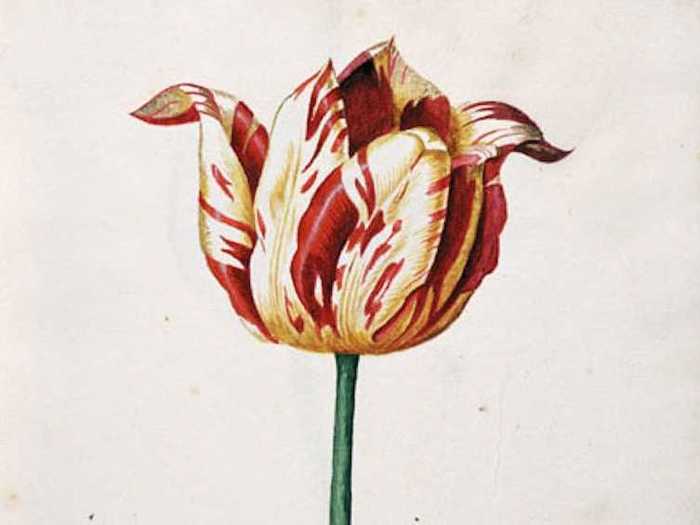
Switsers, a popular bulb, went from 125 florins a pound on Dec. 31, 1636 to 1,500 florins on Feb. 3, 1637.
That's an 1,100% increase.
Source: Anne Goldgar, "Tulipmania"
The climax of Tulipmania was a legendary auction that took place in the town of Alkmaar on Feb. 5.
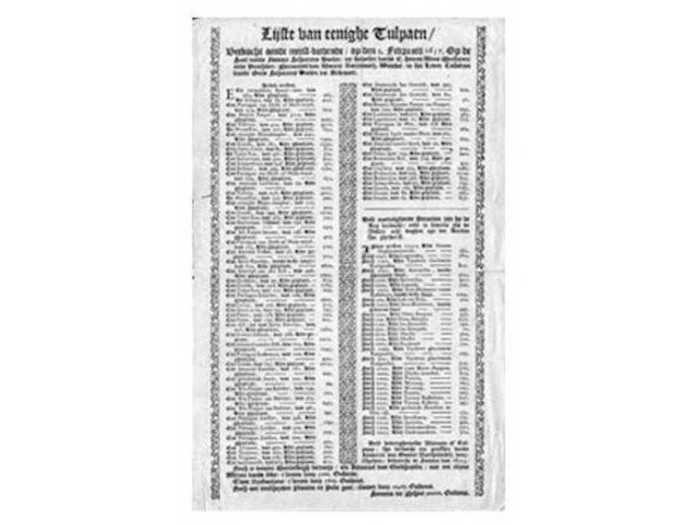
The event was designed to raise money for children recently orphaned. According to a pamphlet printed soon after the proceedings, a Viceroy varietal sold for 4,203 florins and an Admirael Van Enchuysen for 5,200 florins.
Source: Anne Goldgar, "Tulipmania"
According to Goldgar, we don't really know what ignited the sell-off.
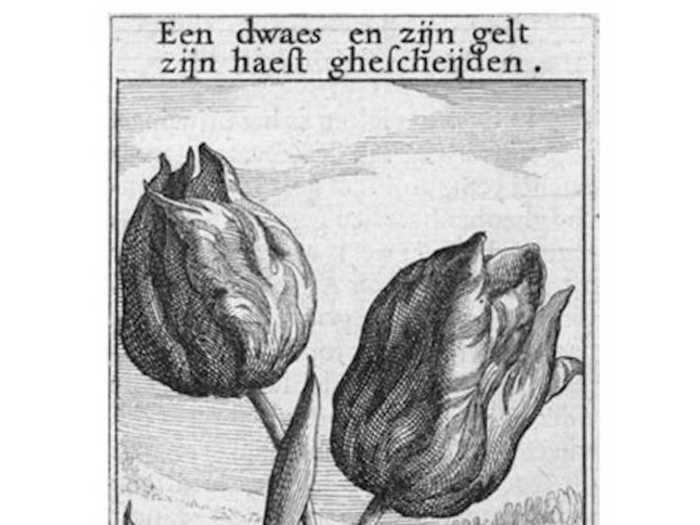
Though this is of course is true for many bubbles. She writes that one dubious source says it may have started with a deal gone bad in Haarlem. Others say buyers may have finally begun to blink at the stratospheric prices. The collapse also coincided with a minor plague that swept through the country.
Source: Anne Goldgar, "Tulipmania"
Goldgar says there's evidence that supply simply outpaced demand.
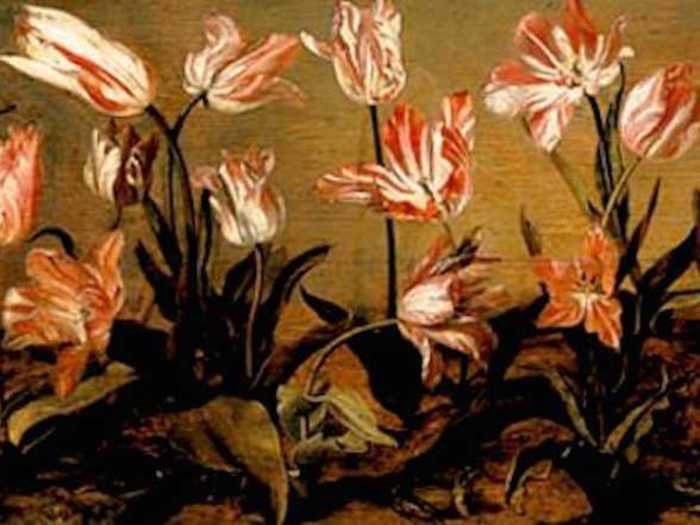
We mentioned the brokerages. She also says small-timers had also begun growing their own tulips.
Source: Anne Goldgar, "Tulipmania"
But overnight, the obligations for that season's bulbs quickly became worthless, bringing down traders, brokerages and insurers who'd sprung up around them.
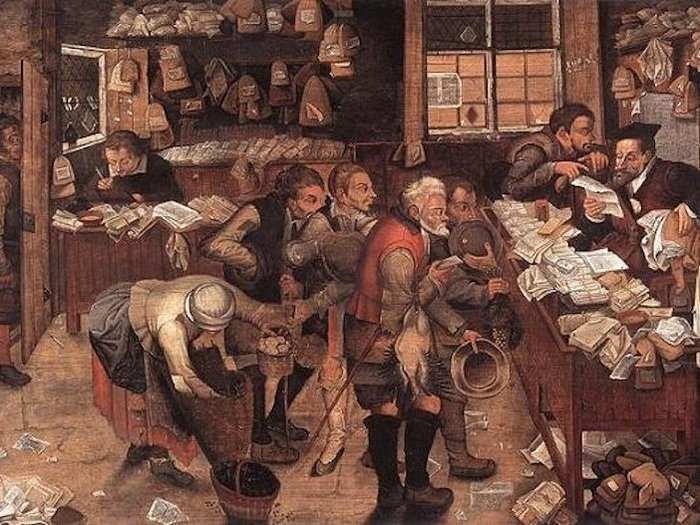
Sound familiar?
Source: Anne Goldgar, "Tulipmania"
The crash was so precipitous that on April 27, the federal States-General was forced to intervene. But it didn't really work.

Goldgar says they issued a weak proclamation, saying it would be up to local magistrates to hammer out arbitration.
Source: Anne Goldgar, "Tulipmania"
A stalemate persisted until January of 1838, when the cities began forming independent commissions to settle financial disputes.
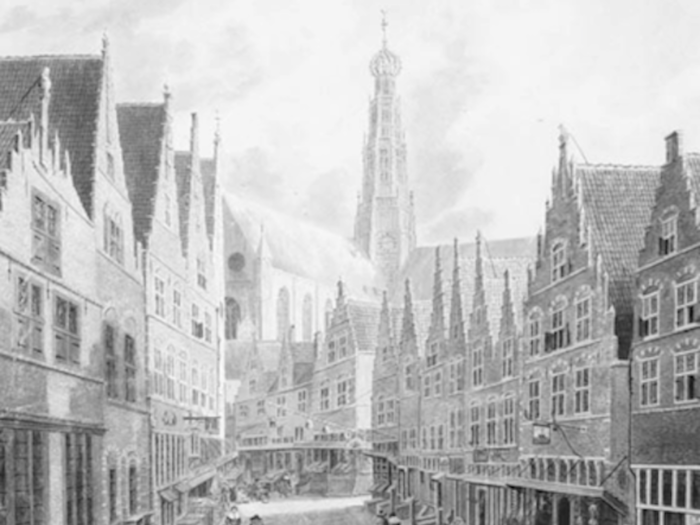
Haarlem set up a commission to deal with the problems stemming from the flower trade, known later as the Commissarissen van de Bloemen Saecken (Commissioners for Flower Affairs,). It would meet every Wednesday and Saturday from 9 a.m. to 11 a.m. and from 2 p.m. to 4 p.m. Anyone who failed to appear would be fined 30 stuivers for the first time to 12 florins for the third.
Source: Anne Goldgar, "Tulipmania"
The solution was to cancel most of the contracts and charge a 3.5% fee charged to the debtors.

Today, of course, such a solution would seem impossible.
Source: Anne Goldgar, "Tulipmania"
Goldgar debunks two myths that emerged from Tulipmania: first, that the merchant class got wiped out.
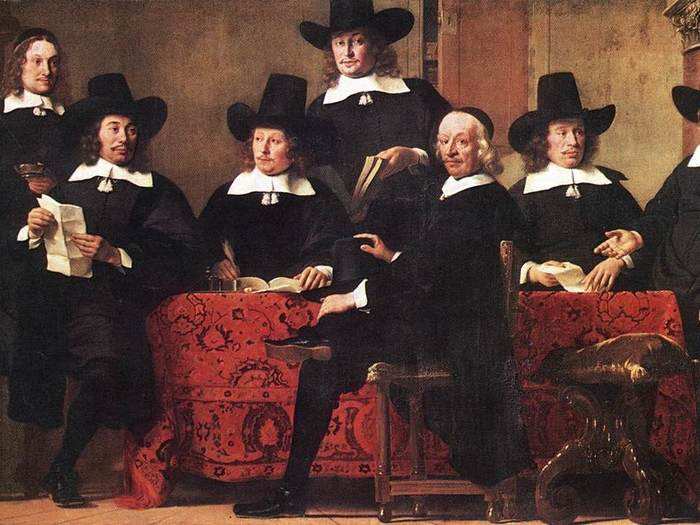
As mentioned, the bulk of the trade had been confined to a small, wealthy class.
Source: Anne Goldgar, "Tulipmania"
The other myth was that Tulipmania destroyed the entire economy.
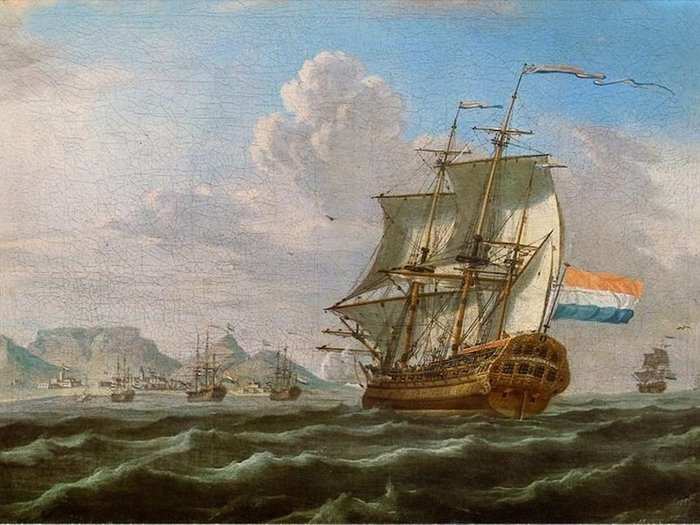
Most sectors of Dutch industry continued to grow until the mid-17th century. The Dutch East India Company didn't even establish The Cape of Good Hope until the 1650s.
Source: Anne Goldgar, "Tulipmania"
So why do we still recall the bubble? First, Goldgar says it may have created an even more pernicious intangible effect in society.
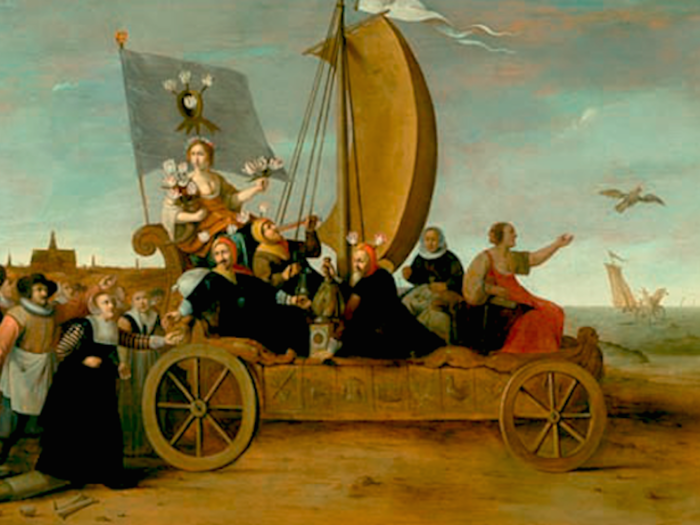
Goldgar says there the greatest damage was to Dutch values. "What is worse than cheating or being false? [a contemporary] wrote. 'Let us know ourselves as liars all.' What was wrong with the tulip trade was not riches, not commerce, but the setting aside of an ordered society based on trust: seeking 'inconstant wealth before honor.' That was a message from the middling ranks. But it was not a message to the poor, but a warning to themselves."
Source: Anne Goldgar, "Tulipmania"
The main reason we still remember it today is because bubbles kept happening. No one learned their lesson.
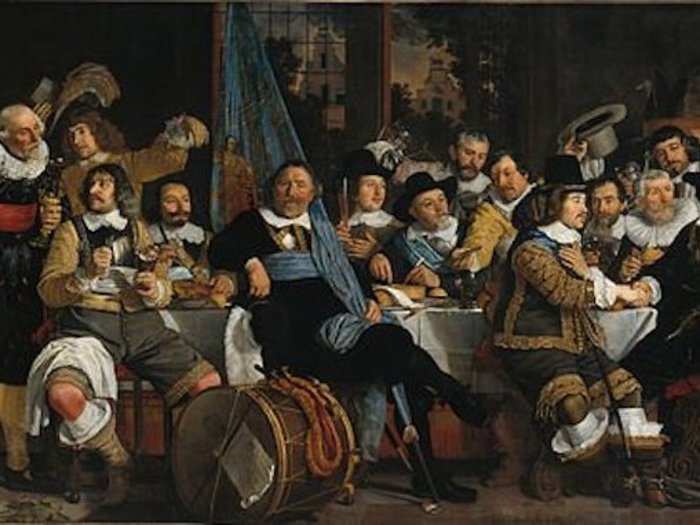
Even after Tulipmania burst, the Dutch zeal for tulips did not abate for another couple of decades, Goldgar says.
Source: Anne Goldgar, "Tulipmania"
By 1720, all Europe was "awash with schemes to make money," Goldgar writes.
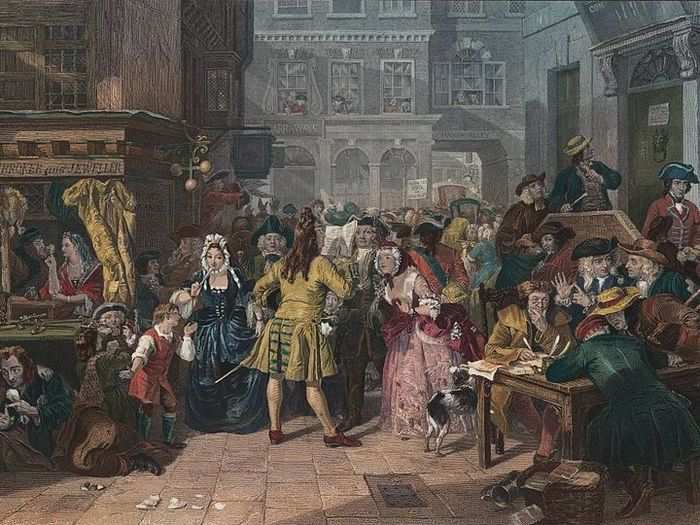
The South Sea Bubble, which saw trading in shares of Britain's South Sea Company skyrocket before crashing overnight, demonstrated to Europeans that Tulipmania was not an isolated incident. It just happened to be the first in recent memory.
Source: Anne Goldgar, "Tulipmania"
Popular Right Now
Popular Keywords
Advertisement
